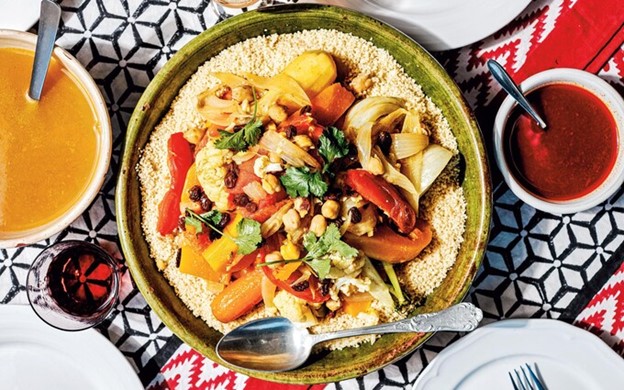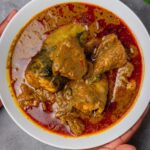Couscous, a staple of North African cuisine, has gained international popularity for its versatile nature and incredible flavors. Originating from the indigenous Berber people, couscous has become a beloved dish that embodies the rich cultural heritage of the region. With its unique blend of aromatic spices, tender grains, and vibrant vegetables, North African couscous offers a culinary experience that is both comforting and exotic.
Couscous itself is a type of pasta made from semolina flour, which is mixed with water to form tiny granules. These granules are then steamed until light and fluffy, creating a delightful texture that absorbs flavors beautifully. Traditionally, the preparation of couscous is an art form, often requiring hours of gentle steaming in a special pot called a couscoussier. The result is a fluffy mound of grains that serve as a perfect base for a variety of ingredients.
What sets North African couscous apart are the distinctive flavors that come from the skillful use of spices and ingredients. In Morocco, for example, spices like cumin, cinnamon, turmeric, and ginger are commonly used to create a warm and aromatic blend known as Ras el Hanout. This spice mix infuses couscous with a fragrant and slightly sweet flavor that is simply irresistible.
The beauty of North African couscous lies in its adaptability to various ingredients. Traditionally, couscous is paired with a richly flavored stew, such as lamb or chicken, which adds depth and richness to the dish. The slow-cooked meats impart their succulent juices, creating a delicious synergy with the couscous grains. Vegetables like carrots, turnips, zucchini, and chickpeas are also added, contributing their vibrant colors and nutritional value.
One classic North African couscous dish is the famous Moroccan couscous royal. It showcases a variety of meats, such as tender lamb, succulent chicken, and flavorful merguez sausage, served atop a bed of couscous. The stew is rich with spices, tomatoes, and onions, creating a harmonious medley of flavors that will transport you to the bustling souks of Morocco.
For those seeking a vegetarian or vegan option, North African couscous shines with its abundance of vegetable-based recipes. Couscous Tfaya, for instance, is a Moroccan delight that features caramelized onions, raisins, and chickpeas, all cooked together to create a sweet and savory topping for the couscous. The combination of flavors and textures is nothing short of extraordinary.
Another popular variation is Algerian couscous, which often incorporates a mix of root vegetables such as carrots, turnips, and potatoes. The vegetables are slow-cooked with aromatic spices and served alongside fluffy couscous grains, resulting in a hearty and satisfying dish.
North African couscous is not only versatile in terms of ingredients but also in its serving options. It can be enjoyed as a main course, a side dish, or even as a cold salad. Leftover couscous can be transformed into a delightful couscous salad by tossing it with fresh herbs, diced vegetables, olives, and a tangy dressing. This makes it a perfect dish for picnics, potlucks, or summer gatherings.
The aromatic flavors of North African couscous have captivated taste buds around the world. Its versatility, incredible taste, and vibrant presentation make it a standout dish in any culinary repertoire. Whether you are a meat lover, a vegetarian, or simply someone looking to explore new flavors, North African couscous offers a gastronomic adventure that will leave you craving for more. So, grab your couscous pot, gather your favorite ingredients, and embark on a culinary journey to savor the delightful flavors of North Africa.








